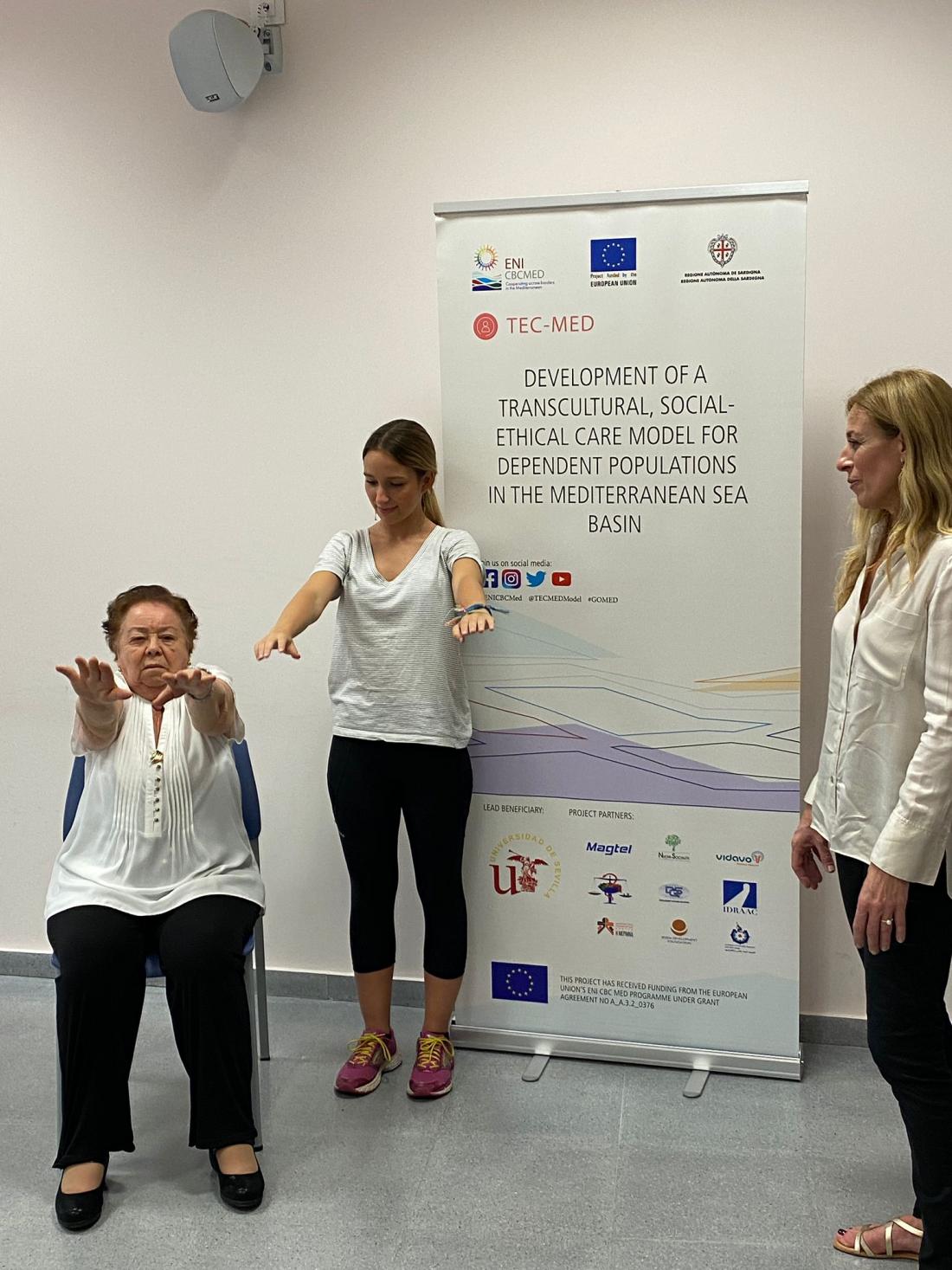The TEC-MED project wants to improve the joint mobility of the elderly through online courses

The TEC-MED project works to create a socio-ethical and cross-cultural care model for the elderly in the Mediterranean basin. Currently, it is in the piloting phase where different courses related to the physical and mental health of the elderly are carried out, as well as other courses aimed at caregivers.
On this occasion, the course held was a workshop on joint mobility in which the following parts of the body were worked on with the aim of improving the mobility of the joints of the elderly participants.
NECK:
- LATERAL INCLINATION OF THE NECK: We start with the neck in a neutral position.
Tilt the head, first to the right, we return to the neutral position (to the center), and
we lean to the left (bringing the ear closer to the shoulder).
- ROTATION: From a neutral position, turn the neck to the right, return to the position
neutral (center), and turn left (as if we were saying “no, no, no, no…”)
SHOULDERS:
- SHOULDER FLEXION-EXTENSION: From a neutral position, we will raise our arms
forward, until they are next to our head.
- LATERAL ARM LIFT: From a neutral position, we will raise our arms
forming a cross, palms facing the ground.
ARM ELBOW:
- FLEXO-EXTENSION OF THE ELBOW: With the arms stretched out in front and the palms facing
the ceiling, we will try to touch our shoulders with the tips of our fingers. Hand
left hand to the left shoulder and right hand to the right shoulder.
- WRIST ROTATION: It can be done either with the arms extended towards the
front or with elbows resting on a table. It consists of rotating the wrists as if
we were practicing “sevillanas” (typical Spanish dance)..
TRUNK:
- LATERAL TIPS: In this movement, you will lean to the sides, without
taking your feet off the ground. The hands can be placed on the hips. will be done for
both sides. Although it can be done sitting or standing, it would be advisable to do it
standing and, if needed, holding on to the back of a chair, to improve
stability.
- ROTATION OF THE TRUNK: In this exercise, we will rotate to the sides, without taking off the
feet of the ground. The neck must accompany the movement. We can help ourselves
by putting our hands on our hips. It will be done for both sides. Although it can be done
sitting or standing, it would be advisable to do it standing up and, if necessary, holding on to the
back of a chair, for example, to improve stability.
HIP:
- LEG RAISING WITH KNEE BENDING: Sitting or standing, with your back
straight, we will bend the leg at the knee, and try to take it to the ceiling. The exercise
It should be done alternating both legs.
KNEE:
- FLEXO-EXTENSION OF THE KNEES: Sitting or standing, with a straight back, we will bend and
we will stretch the leg at the knee. The exercise must be performed with both legs.
ANKLES:
- ANKLE ROTATION: Sitting or standing, we will lift the foot with which we are going to
start from the ground and we will make turns to the right and then to the left,
then we'll change feet.
- PALMAR AND PLANTAR FLEXION OF THE ANKLE: Sitting or standing, “pointe”
(only toes touching the ground) and heel (only heels resting on
soil).









